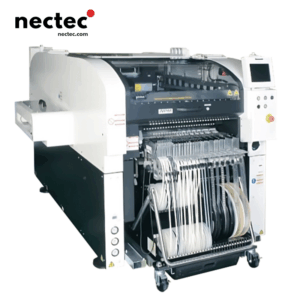In the rapidly evolving world of manufacturing, technological advancements continue to reshape the landscape, promoting efficiency and precision. Among these innovations is the LED pick and place machine, an essential tool that has garnered significant attention within the industry. This article delves into the operational principles, advantages, applications, and future trends related to LED pick and place machines, setting the stage for understanding their role in modern manufacturing.
LEDピック&プレース・マシンを理解する
LED pick and place machines are automated systems designed to perform the essential task of placing LED components onto printed circuit boards (PCBs). Unlike traditional assembly methods, which often involve manual labor, these machines use robotic arms and advanced vision systems to ensure precision placement. The integration of LED technology allows for enhanced lighting solutions and energy efficiency in various applications, making these machines pivotal in today’s electronic manufacturing processes.
LEDピック&プレース・マシンはどのように機能するのか?
The operational mechanism of LED pick and place machines involves several critical steps:
- 成分給餌: The PCB and the LED components are fed into the machine. Components are typically stored in trays, feeders, or conveyors.
- ビジョン・システム High-resolution cameras take images of the PCB, identifying the exact placement locations for the LEDs.
- ピッキングだ: The robotic arm delicately picks up the LED components from the feeder using suction or mechanical grips.
- 配置だ: The arm then moves to the PCB and places the components with high accuracy, often within a precision of a few microns.
- ハンダ付け: After placement, the PCBs move to the soldering phase, where methods such as reflow or wave soldering are utilized to secure the components.
LEDピック&プレース・マシンを使用する利点
Investing in LED pick and place machines offers numerous advantages for manufacturers:
- 効率の向上: Automation dramatically reduces the time required for assembly, leading to higher production rates compared to manual methods.
- 精度と正確さ: With advanced vision systems, these machines provide exceptional accuracy, minimizing defects and enhancing product quality.
- スケーラビリティ: Whether for small-scale projects or large production runs, pick and place machines can be adjusted to accommodate varying production needs.
- 費用対効果: Although initial investments can be significant, the reduction in labor costs and the increase in throughput can lead to substantial long-term savings.
- 柔軟性: Modern machines can be programmed to handle various components, making it easy to switch between different products with minimal downtime.
LEDピック&プレース・マシンの用途
LED pick and place machines are utilized across various sectors that rely on electronic components:
- コンシューマー・エレクトロニクス From smartphones to home appliances, LED technology is increasingly integrated into everyday gadgets.
- 自動車産業: With the rise of electric vehicles, the demand for precise LED assembly in automotive lighting and dashboard displays is on the increase.
- 医療機器 LEDs play a crucial role in medical technologies, including diagnostic equipment, where reliability and accuracy are paramount.
- 航空宇宙と防衛 High-reliability requirements in these sectors necessitate advanced assembly methods to ensure product integrity.
Emerging Trends in LED Pick and Place Technology
The future of LED pick and place machines is bright, with several emerging trends that are likely to shape their evolution:
- AIと機械学習の統合: Incorporating artificial intelligence allows machines to learn from previous tasks, optimizing processes, and reducing errors.
- Higher Speeds and Throughput: Manufacturers are constantly working to develop faster machines that can handle even more components without sacrificing quality.
- サステナビリティへの取り組み: As environmental concerns rise, manufacturers focus on energy-efficient machines and environmentally friendly components in the assembly process.
- ロボット工学とのコラボレーション: Increased collaboration between pick and place machines and other robotic systems within the production line is expected, creating more streamlined processes.
LEDピック&プレースマシンが直面する課題
Despite their advantages, there are challenges to overcome:
- 高いイニシャルコスト: The investment required for advanced machines can be a barrier for small manufacturers.
- 技術的複雑性: The integration of sophisticated systems requires skilled personnel for operation and maintenance.
- コンポーネントのばらつき: With various types of LEDs, ensuring compatibility can sometimes pose difficulties during programming and setup.
インダストリー4.0におけるLEDピック&プレース・マシンの役割
As the industry moves towards the fourth revolution, characterized by smart manufacturing and the Internet of Things (IoT), LED pick and place machines are set to play a crucial role. They will become integral to connected production lines, providing real-time data that enhances monitoring and maintenance strategies. This interconnected environment brings about the potential for predictive analytics, enabling manufacturers to anticipate issues before they become critical.
結論
In summary, the rise of LED pick and place machines offers transformative opportunities in manufacturing. With their ability to enhance efficiency, precision, and flexibility, these machines are at the forefront of the electronics assembly revolution. By understanding their principles, advantages, applications, and future trends, manufacturers can harness their full potential to stay competitive in an ever-evolving market.






